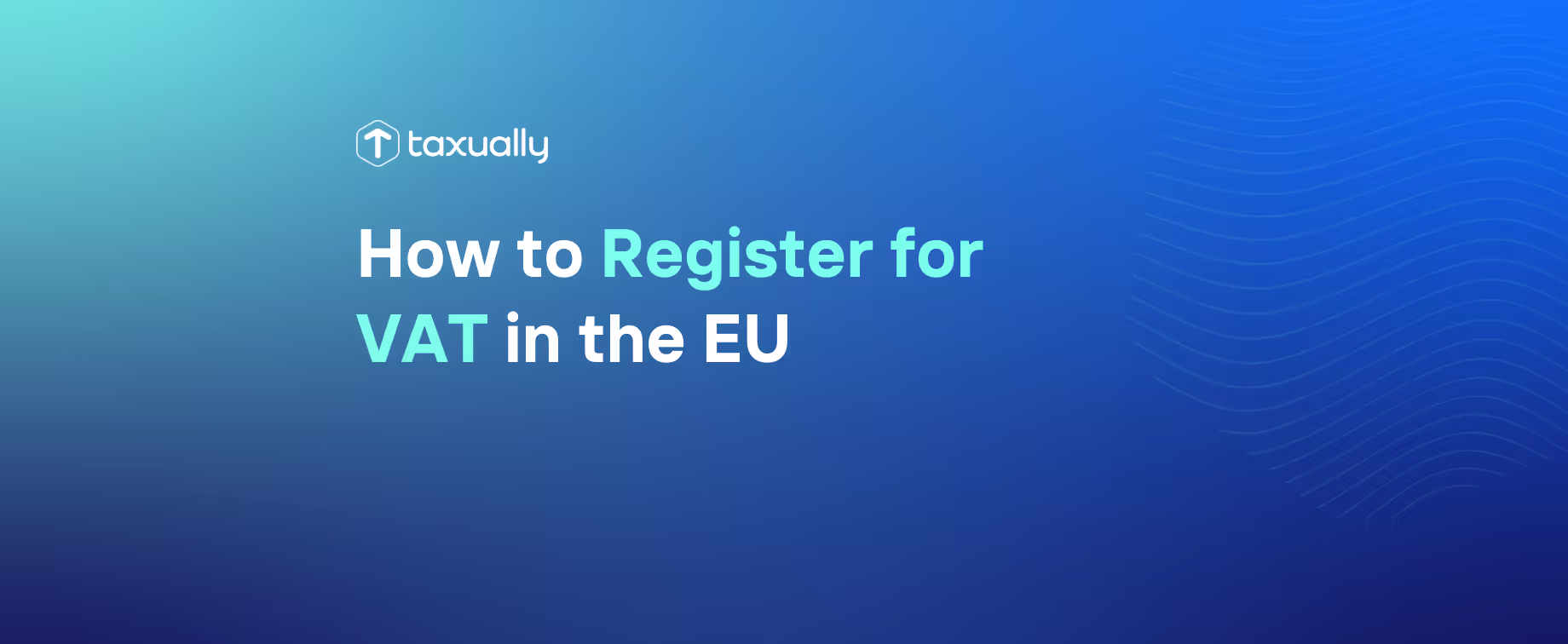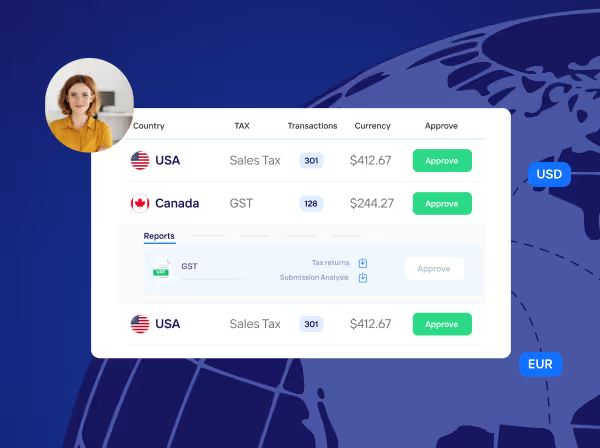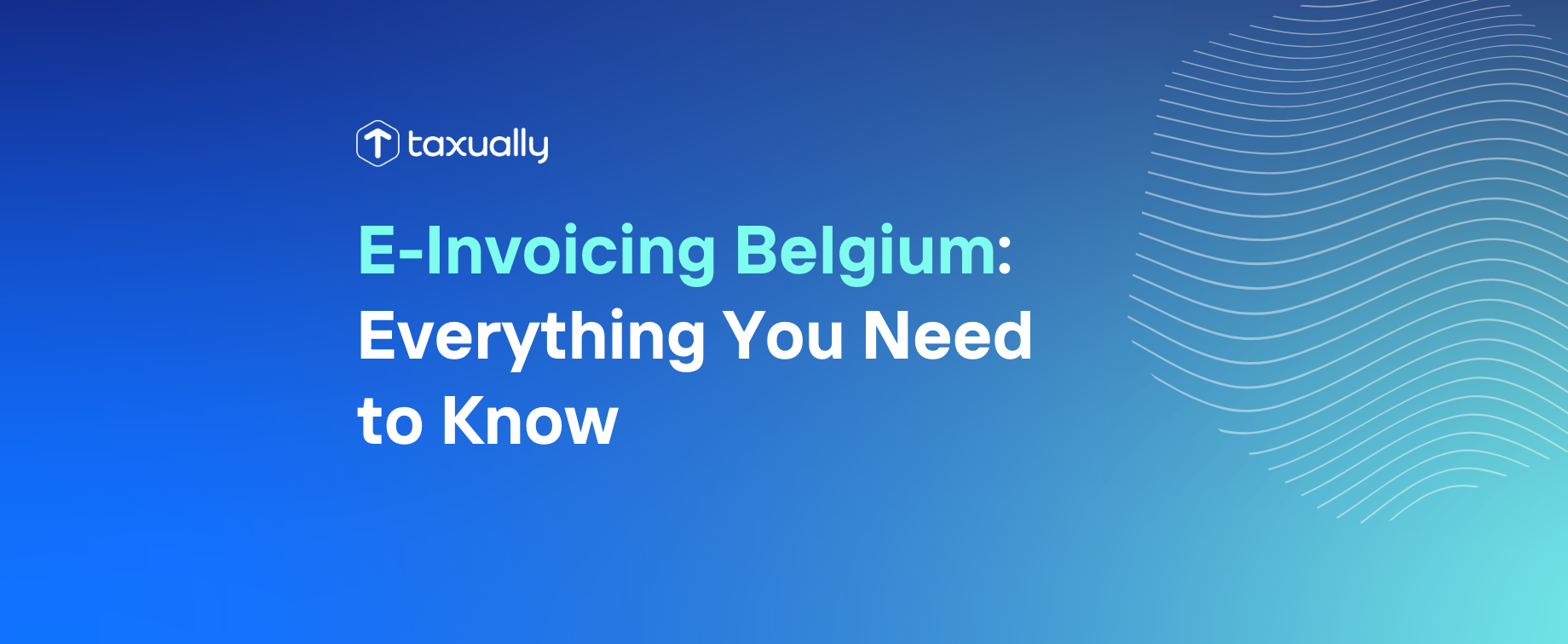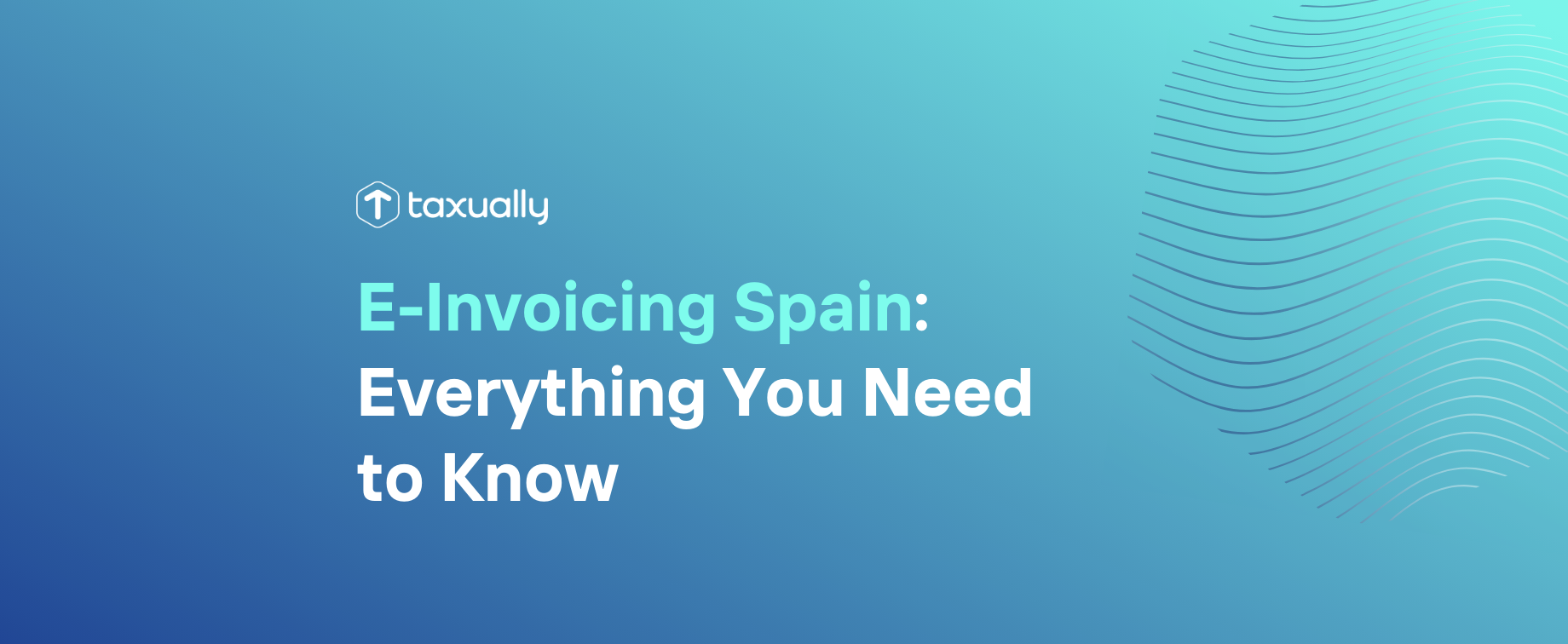Key takeaways
- VAT registration is required if your annual sales to EU customers exceed €10,000, even if your business is not based in the EU.
- Each Member State has its own process, so you’ll need to register separately and submit local VAT returns if operating in multiple countries.
- Accurate compliance is essential—failure to register, file returns, or charge VAT correctly can lead to penalties and fines.
The rules surrounding registering for VAT in the EU can be complex, and whether or not they apply to your business will depend on various factors, including the nature of the goods or services being sold, the location of the customer, and the value of the sales.
VAT compliance and the VAT threshold
If you have a business based in the EU or sell goods or services to customers in the EU, you may need to register for VAT in one or more Member States. Since July 2021, a Europe-wide distance-selling VAT threshold of €10,000 in taxable sales has applied. So, if your sales in any one EU country exceed this, you’ll be required to register for VAT there. It's also likely that you’ll have to appoint a fiscal representative if your business is not based in the EU.
VAT returns must be submitted to the relevant tax authority on a regular basis, usually monthly or quarterly. The VAT return will detail the amount of VAT charged and paid during the reporting period. If you’re registered for VAT in more than one Member State, you’ll need to submit a separate VAT return for each country.
It’s important to comply with the VAT rules in the EU, as failure to do so can result in penalties and fines. Businesses registered for VAT must keep accurate records of their sales and purchases, and ensure that they charge and pay the correct amount of VAT. They must also issue VAT invoices that meet the requirements of the relevant Member State.
Voluntary VAT registration
While many businesses are required to register for VAT due to their turnover exceeding the compulsory registration threshold, others may choose to register voluntarily. Voluntary VAT registration can be a strategic decision for businesses looking to optimize their financial operations and enhance their market presence.

Benefits of voluntary VAT registration
- Reclaim VAT on purchases – Reduce costs and improve profitability by claiming back VAT on goods and services, especially if your business has substantial expenses.
- Enhanced credibility – Being VAT registered can boost your reputation with customers and suppliers, showing you are established and trustworthy, which may help when working with larger clients or entering new markets.
- Better financial insight – Detailed VAT records provide valuable data for managing your business, aiding in financial planning, decision-making, and tracking taxable turnover.
- Claim VAT on pre-registration purchases – Potential to reclaim VAT on eligible items bought before your registration date, which can be valuable if you invested heavily prior to registering.
Potential drawbacks to consider
- Higher prices for some customers – Charging VAT may make your products or services more expensive for non-VAT registered customers, affecting competitiveness.
- Increased administration – Requires regular VAT returns and meticulous record-keeping, adding to operational workload and costs.
Bottom line – Voluntary VAT registration can lead to cost savings, stronger market credibility, and improved financial control, but businesses should weigh these benefits against the extra costs and responsibilities.
How to register for VAT
Although each EU country will have its own VAT registration requirements, generally, the following steps will apply to any business looking to register for VAT within the EU.
Determine if you need to register for VAT
The first step is determining if registering for VAT is required. In most circumstances, if you’re a business that sells goods or services in the EU, and those sales exceed €10,000, you’ll need to register for VAT.
It is crucial to know how much VAT you need to charge and pay to ensure compliance and accurate reporting.
Gather the required documentation
Once you’ve ascertained the countries where it’s necessary to register for VAT, you’ll need to gather the required documentation. This will typically include your business registration documents, proof of identity, and proof of address. You may also need to provide additional documents, depending on the country you’re registering in.
Complete the VAT registration form
You’ll then need to complete the local VAT registration form, which will ask for information about your business, such as your business name, address, and tax identification number. You’ll also be required to provide information about your supplies and your turnover. In most cases, the form must be completed in the local language. Upon approval, you will be issued a VAT registration number.

Submit the VAT registration form
The completed form should then be submitted to the local tax authority in the country you’re registering. You’ll need to submit the form either online or in person, depending on the country where you’re registering for VAT. It is crucial to ensure accuracy in VAT registrations to avoid delays in the approval process.
Wait for your EU VAT registration number
Following the submission of your VAT registration form, you must wait for your EU VAT number (also known as an intra-community VAT number or VAT ID) to be issued. This can take anywhere from a few days to several weeks as the registration process and timings can vary widely from country to country.
Start charging and paying VAT
Once you’ve received your EU VAT number, you can start charging VAT on your sales. You’ll also need to submit regular VAT returns to the local tax authority, which will require you to report your VAT transactions for the period.
What is an intra-community VAT number?
An intra-community VAT number is a unique identification number assigned to businesses operating within the European Union (EU) that are engaged in the supply of goods or services across EU borders.
The intra-community VAT number enables businesses to trade freely within the EU without being subject to VAT twice. It allows the EU tax authorities to identify and track business transactions between Member States and facilitates the billing and collection of VAT.
Once registered, businesses can include their intra-community VAT number on invoices and other official documents related to their cross-border transactions within the EU.
The One Stop Shop (OSS) and Import One Stop Shop (IOSS)
To simplify VAT compliance for businesses selling across EU borders, the EU introduced two special schemes in July 2021: the One Stop Shop (OSS) and the Import One Stop Shop (IOSS). These schemes are designed to reduce the need for multiple VAT registrations in different Member States.
One Stop Shop (OSS)
The OSS is available for EU and non-EU businesses selling goods or certain digital services to consumers in other EU countries. Instead of registering for VAT in every country where your customers are located, you can register for the OSS in a single Member State and report all qualifying EU sales through one quarterly VAT return.
By using the OSS, businesses only need to:
- Register once for VAT under the OSS scheme in one EU country.
- File a single OSS VAT return covering all distance sales within the EU.
- Pay VAT due via a central payment, which is then distributed to the appropriate Member States.
This greatly reduces administrative burden and helps businesses stay compliant with local VAT rules across the EU.
Import One Stop Shop (IOSS)
The IOSS applies to distance sales of low-value goods (under €150) imported into the EU. It enables sellers to collect VAT at the point of sale, which means customers won’t be hit with unexpected VAT charges when their order arrives.
Key benefits of the IOSS include:
- A simplified process for collecting, declaring, and paying VAT on imported goods.
- A better customer experience by avoiding delays and additional charges at customs.
- Only one IOSS registration is needed to sell to consumers across the entire EU.
Both the OSS and IOSS are optional, but they can be extremely useful for e-commerce businesses selling cross-border within the EU or importing goods into the bloc. Choosing to register for one or both can save time, reduce compliance complexity, and improve customer satisfaction.
Conclusion
VAT is an important tax that applies to most goods and services in the EU. Businesses registered for VAT must comply with the relevant rules and regulations, including charging and paying the correct amount of VAT, submitting VAT returns on time, and keeping accurate records. It is also crucial to understand the distinction between VAT regulations and income tax obligations, as businesses need to manage both effectively.
Do you need help with your VAT compliance? Book a free call with one of our VAT experts to find bespoke solutions for your business, optimize your VAT costs, and reach millions of new potential customers.
Frequently asked questions
New Year's Day - 1/1/2024Memorial Day - 5/27/20244th of July - 7/4/2024Labor Day - 9/2/2024Thanksgiving Day - 11/28/2024Day after Thanksgiving - 11/29/2024Christmas Eve - 12/24/2024Christmas Day - 12/25/2024
Do I need to register for VAT if my business is outside the EU?
Yes. If your annual sales to EU customers exceed €10,000, you must register for VAT—even if your business is not based in the EU.
What is an intra-community VAT number?
It’s a unique VAT identification number that allows businesses to trade goods or services across EU borders without being taxed twice, and it's essential for compliance and cross-border transactions.
Can I register for VAT in just one EU country?
Only if you use the One Stop Shop (OSS) scheme. Otherwise, you'll need to register separately in each Member State where you exceed the threshold or conduct taxable business.
What’s the difference between OSS and IOSS?
OSS simplifies VAT reporting for sales to EU consumers by allowing a single VAT return. IOSS is for collecting VAT on low-value goods (under €150) imported into the EU, streamlining import and compliance.
How long does VAT registration take in the EU?
It varies by country—from a few days to several weeks. It depends on the local tax authority’s procedures and the completeness of your application.



















